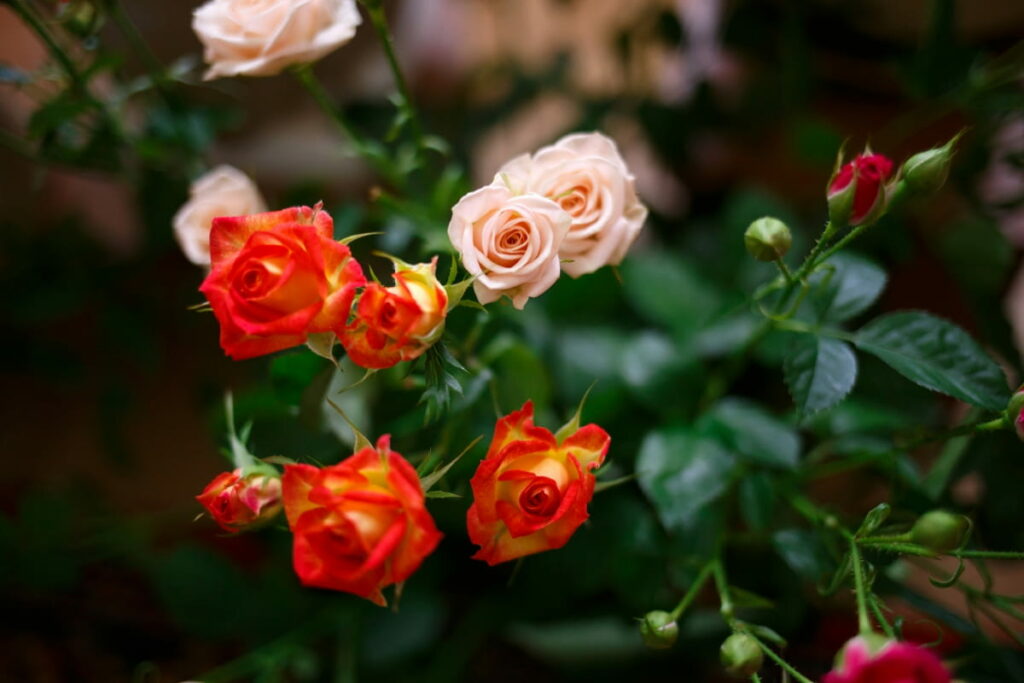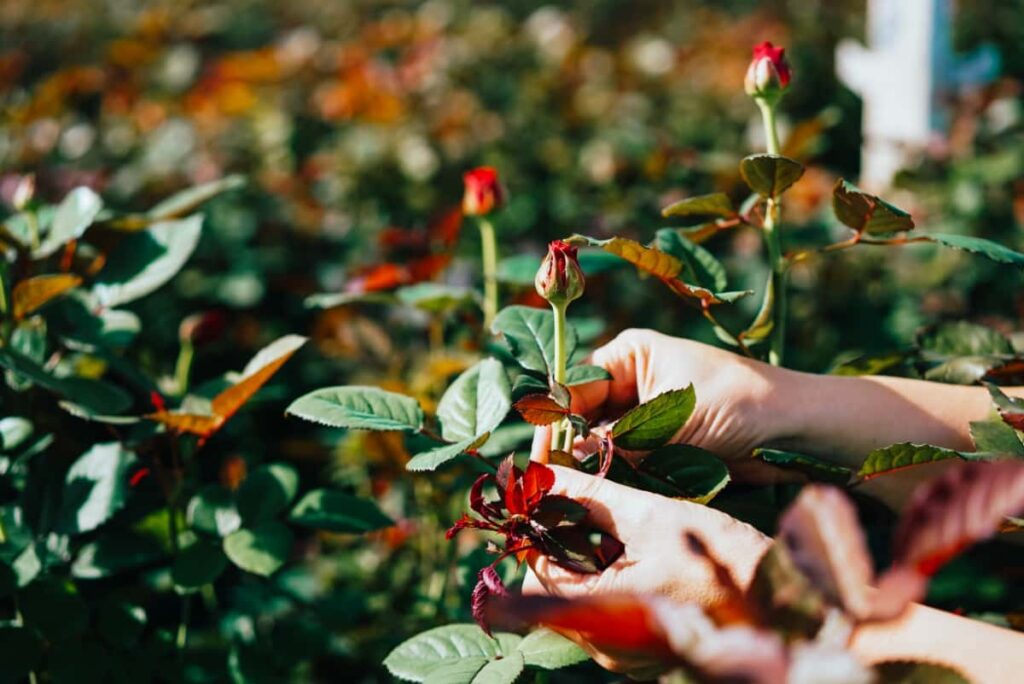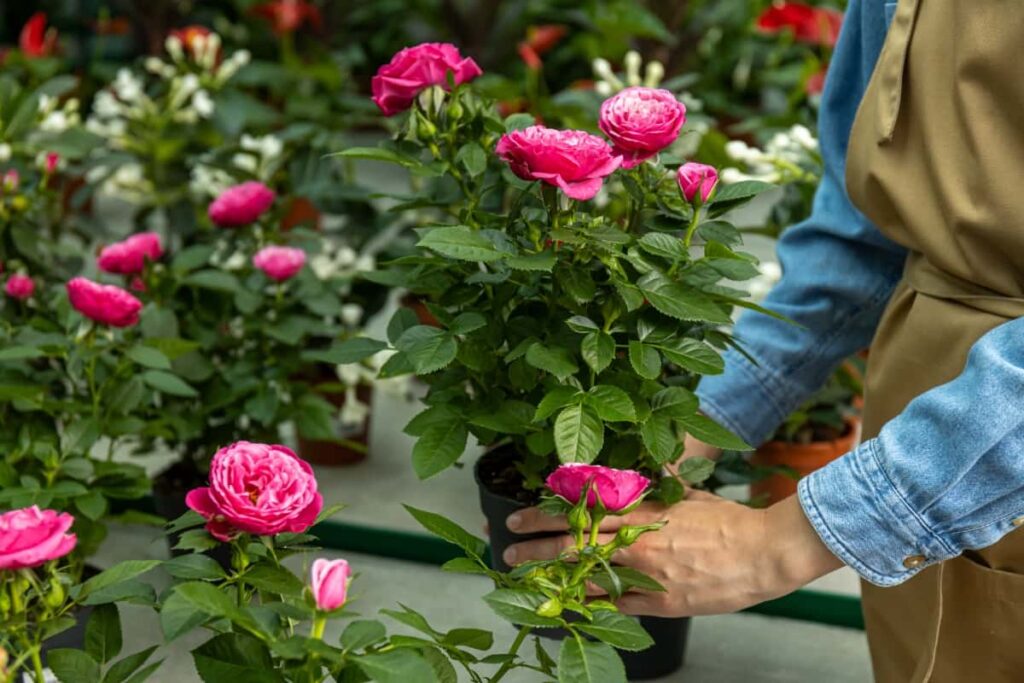Rose (Rosa rubiginosa) and Aloe Vera (Aloe barbadensis Miller) are both renowned for their healing properties and aesthetic appeal, making them an ideal pairing in the world of gardening. By using Aloe Vera as a natural rooting hormone, you can nurture healthy root development in your Rose cuttings and watch as they flourish into beautiful plants. This innovative method combines the beauty of Roses with the natural benefits of Aloe Vera gel, creating a powerful recipe for successful plant propagation.

Propagating Roses with Aloe Vera
Overview of Propagating Roses with Aloe Vera
Benefits of Aloe Vera as a Natural Rooting Hormone
Aloe Vera acts as a natural rooting hormone when propagating Roses. This means faster root development and healthier plants in the long run. It provides nutrients and protection against common issues like fungal diseases. It can protect Rose cuttings from diseases, ensuring their successful propagation.
Understanding the Basics of Rose Propagation
Aloe Vera is for soothing sunburns and it can work wonders to help Roses develop strong roots. By harnessing the natural properties of Aloe Vera, you can give your Rose cuttings that extra boost they need to thrive and grow into healthy plants. Understanding the basics of Rose propagation is essential before diving into this exciting technique. Plus, it’s an organic and cost-effective alternative to synthetic rooting hormones commonly found in stores.
Selecting the Right Rose Cuttings
Criteria for Choosing Healthy Cuttings
When it comes to selecting the right Rose cuttings for propagation, healthy stems are key. Look for young, green shoots that are free from disease or damage. These vigorous cuttings have the best chance of developing strong roots. The importance of this technique lies in its natural approach to promoting root development, leading to healthier and more resilient plants.
Best Time of Year for Rose Propagation
The best time of year to gather your Rose cuttings is typically in late spring or early summer when plants are actively growing. This period ensures that the stems you choose are at their most robust and ready to take root. Avoid using woody or overly mature stems, as they may struggle to establish themselves in a new environment. Opt instead for softwood cuttings that bend easily and show signs of active growth.
Preparing Aloe Vera for Rooting
How to Extract Aloe Vera Gel
Extracting fresh Aloe Vera gel for rooting your Rose cuttings is simple yet crucial. Start by selecting mature and healthy aloe leaves. Using a knife, carefully slice open the leaf lengthwise to reveal the clear gel inside. Scoop out the gel using a spatula, ensuring you collect as much pure gel as possible. Avoid any yellow sap that may be present near the skin of the leaf, as it can irritate.
Creating a Natural Rooting Solution with Aloe Vera
Before you can use Aloe Vera as a rooting hormone for your Rose cuttings, you’ll need to extract the gel from the plant. Transfer the extracted gel into a clean container and blend it until smooth to create your natural rooting solution. Aloe Vera contains beneficial enzymes and hormones that promote root growth in plants, making it an excellent alternative to synthetic rooting hormones.
Preparing Your Cuttings for Propagation
Trimming and Prepping Rose Cuttings
Start by selecting healthy stems with at least two sets of leaves. Using sharp, clean shears, make a diagonal cut just below a leaf node to develop root growth. Remove buds from the cutting to divert energy towards root development. Trim the lower leaves off the stem, leaving only a couple of sets at the top to reduce moisture loss during rooting. Dip the trimmed end of each cutting into fresh Aloe Vera gel extracted from the plant’s leaves.
Dipping Cuttings in Aloe Vera Gel
Aloe Vera gel helps to stimulate root growth in your Rose cuttings. The gel acts as a protective barrier against bacteria while providing nutrients that aid in new root formation. Allow the gel to dry on the cutting before planting it in soil for propagation.
In case you missed it: Rose Flower Growing Tips and Tricks

Planting the Aloe Vera-Treated Cuttings
Choosing the Right Soil Mix and Containers
When it comes to planting your Aloe Vera-treated Rose cuttings, selecting the right soil mix is crucial. Opt for well-draining soil that will provide the necessary nutrients and support for root development. Choosing the correct containers for your Rose cuttings is equally important. Use small pots by have drainage holes to prevent waterlogging and promote healthy root growth.
Planting Techniques for Optimal Root Development
When planting your cuttings, make sure to create an optimal environment for root development. Place the cutting at a depth where two-thirds of it is buried in the soil while ensuring that leaves do not touch the medium. Water your newly planted cuttings lightly but consistently, keeping the soil moist but not waterlogged. Place your containers in a warm location with indirect sunlight to encourage root formation and growth.
Creating the Ideal Environment for Rooting
Humidity, Light, and Temperature Conditions
Maintaining optimal humidity levels is essential for keeping your cuttings moist without causing mold or rot. Light exposure is another important factor to consider. Aim for a consistent temperature range between 18-24°C to encourage root development and prevent stress on the plants.
Using Mini Greenhouses or Plastic Covers
Consider using mini greenhouses or plastic covers to create a humid microclimate around your cuttings. Mini greenhouses provide a warm and moist atmosphere that encourages the development of roots. Plastic covers can also be used to trap moisture around the cuttings, mimicking the conditions of a greenhouse. By covering your pots or trays with plastic, you are creating a microclimate that supports healthy root formation.
Caring for Your Rose Cuttings During Rooting
Watering Practices for Rooted Cuttings
Caring for your Rose cuttings during the rooting process is crucial for their success. Proper watering practices are essential to keep the cuttings hydrated without drowning them. Make sure the soil remains moist but not waterlogged. Stay observant of any changes in your Rose cuttings’ appearance or behavior.
Monitoring for Signs of Growth and Root Development
Monitor your cuttings regularly for any signs of growth and root development. Look out for new leaves sprouting or roots emerging from the stem nodes. This indicates that your cuttings are establishing themselves and thriving in their new environment. Adjust your watering based on the needs of your Rose cuttings.
Transplanting Rooted Rose Cuttings
When and How to Transplant into the Garden
Transplanting rooted Rose cuttings is an exciting step in the propagation process. Once your cuttings have developed strong roots, it’s time to move them into the garden, where they can flourish. Select a sunny place with well-draining soil for transplanting. Make sure to prepare the soil beforehand by mixing in some compost or organic matter to provide nutrients for the young plants.
Acclimatizing Cuttings to Outdoor Conditions
Gently remove the cuttings from their containers, being careful not to disturb the root system. Plant each cutting at a depth where only the top leaves are above ground level. Water the newly transplanted cuttings thoroughly and continue to monitor their growth closely. Gradually expose them to outdoor conditions by slowly increasing their time outside each day.
In case you missed it: Dutch Rose Farming Business in India: Economics, Cost, and Profit for 1 Acre Cultivation

Troubleshooting Common Issues
Dealing with Mold, Rot, and Pest Problems
Dealing with mold, rot, and pest problems can be a common challenge when propagating Roses with Aloe Vera. Mold can develop if the environment is too damp or lacks proper air circulation. To combat this issue, ensure your cuttings are not overcrowded and provide good airflow by removing any covering that may trap moisture.
Rot is another concern that can arise if the soil becomes waterlogged. If you notice signs of rot, such as mushy stems or a foul odor, act quickly to save your plants. Pests like aphids and spider mites are unwelcome visitors that can damage your Rose cuttings. Keep a close eye on your plants for any infestation signs and take prompt action using organic pest control ways to protect your precious Roses.
Reviving Struggling Rose Cuttings
Reviving struggling Rose cuttings may require some extra care and attention. Adjusting watering schedules, providing adequate light exposure, and ensuring proper humidity levels can help rejuvenate weakened plants back to health. Stay vigilant and proactive in addressing any issues that may arise during the propagation process.
In case you missed it: How to Grow Desert Roses: Varieties, Soil, Planting, Pruning, Fertilizers, and Care

Conclusion
Propagating Roses with Aloe Vera offers numerous benefits, including increased root growth, improved resistance to disease, and enhanced overall plant health. By using Aloe Vera as a rooting hormone, you are reducing the need for synthetic chemicals and promoting an eco-friendly approach to gardening.
- Broccoli Varieties: Choosing the Right Cultivars for Your Farm
- How to Raise Pigs in Your Own Backyard: A Comprehensive Guide
- Budget Friendly Sheep Shed Ideas: Cheap and Low-Cost Tips
- How Much Do Cattle Farmers Make: Revenue Streams in Cattle Farming
- Management Pests and Diseases in Your Cotton Field
- Sheep Farming Business Plan for Beginners
- Aquaponic Farming at Home: A Step-By-Step Guide
- Profitable Village Farming Business Ideas in 2024
- High-Yield Aquaculture: Fast-Growing Fish for Farming
